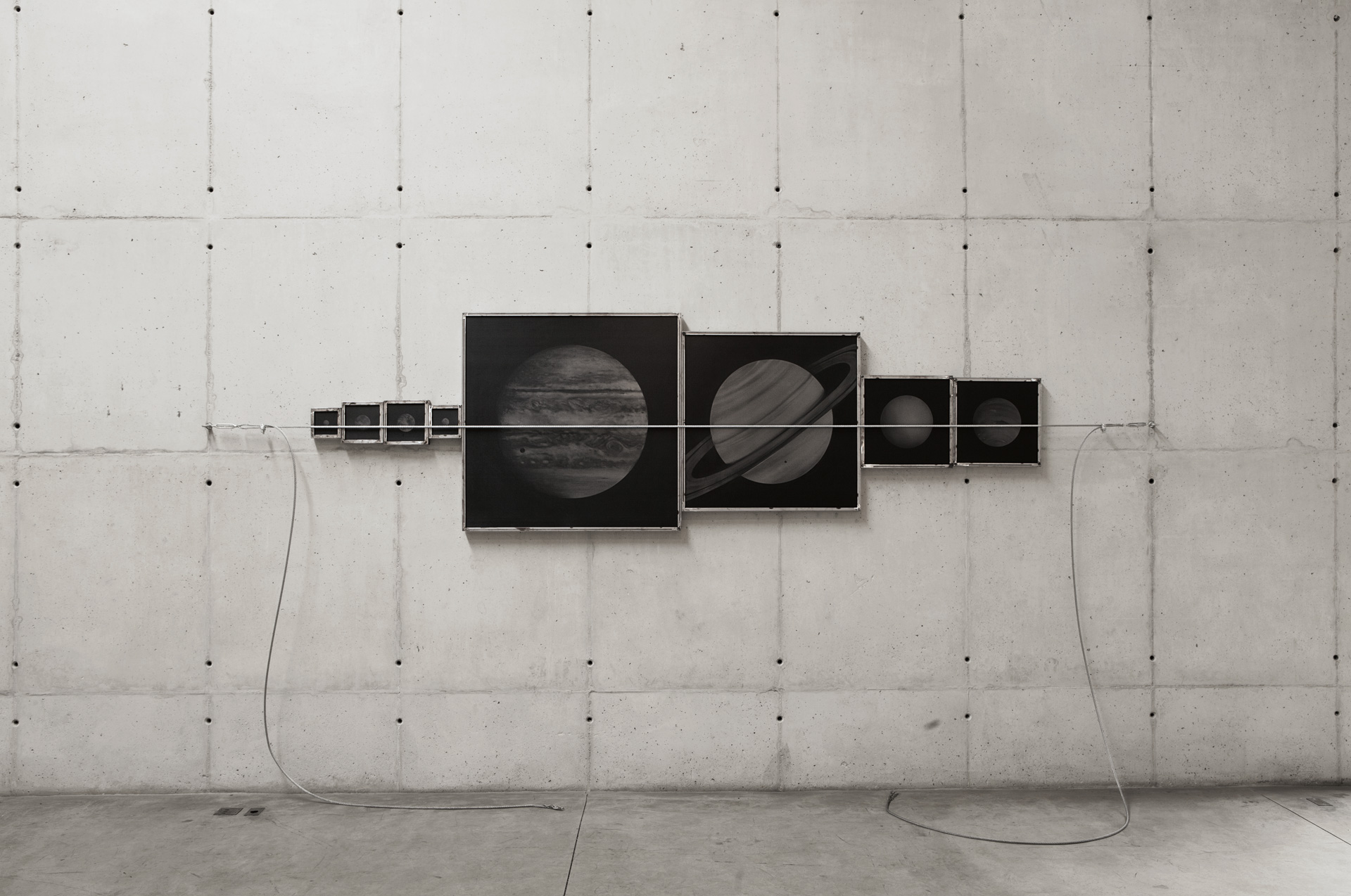Marcelo Moscheta - Atlas
Fernanda D'Agostino
Known for dealing with notions of landscape, Marcelo Moscheta’s most recent works are on view in “Atlas” at Galeria Leme in São Paulo.
Pieces from the “Googlemaps” series consist of white fields that look like damaged maps. What appear to be cartographic lines are in fact the result of a layer of randomly crackled adhesive. Atlas (2011), made of eight graphite drawings on black PVC board, represents the planets of the solar system in their actual relative proportions to one another. A steel cable holds the drawings against the wall, suggesting a force disproportionate to what we observe to be necessary. From that point onwards the supports used for hanging the works cease to be merely functional and assume leading roles in the narrative. This is apparent in Pouliguen (2011) and Valsassina (2011), two graphite drawings resting atop a pile of rocks and placed against a wall. The images of a cave in France and a mountain in Italy are copied from old postcards, and there is the suggestion that the stones that support the drawings were collected from the represented places. Both pieces communicate a sense of frailty. The weight of the frames seems to be much greater than the elements that sustain them. In the series “33 Montanhas” (2010), 33 drawings depict a fragmented mountain range. And 33 is also the age of the artist when he produced the piece, a discreet autobiographical allusion in the show. Finally, the photographic series “Parallax” (2010-11) puts together seven images that seem to be of deserts or of other planets. In truth, they are mounds of sand photographed close up. Only the title indicates some kind of incoherence.
There is a dialogue in Moscheta’s work between what is being represented and the materials employed. Stone, iron and graphite are used in drawings that reference their own origins. Often the artist opts for subverting the function of an index. A map, for example, is converted into an image lacking in orientation and functionality. We are not dealing here with documentation. Moscheta is interested in the strategies created to observe and render nature perceivable rather than nature itself.
FlashArt Magazine
may/jun 2011
